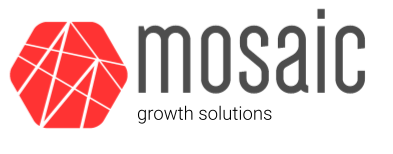In the fast-paced world of business, scaling isn’t just about growth in size but also about growth in efficiency and relevance. As fractional CMOs we have worked with many B2B SaaS companies that have driven significant growth through a traditional enterprise sales motion. However, in today’s hypercompetitive market, many of these same companies are exploring product-led growth (PLG) strategies that can lower the cost of acquisition to drive more sustainable and efficient growth. Here are 6 pitfalls that you should be aware of if your company is building a PLG motion.
1. Too Much Friction in the Sign Up/Upgrade Process
In the era of immediacy and convenience, companies that demand too many steps or require unnecessary information risk alienating potential users. Product-led growth necessitates a friction-free signup process and opportunities to upgrade at critical usage points. When selling to enterprises an organization may see some friction points as a key opportunity to sell to prospects, but with product-led growth those points cause abandonment.
2. Too Many Bells and Whistles in the Product
Selling to enterprises can require companies to “overload” their product with features, but it’s crucial to remember that more isn’t always better. This type of overloading can confuse or intimidate potential users trying to explore the product on their own. Remember, In product-led growth, users are usually coming to you because they likely have an immediate pain point or particular need they are seeking to address. Your user experience should make it easy to explore the features relevant to your prospects’ most common pain points.
3. Wrong Sales Process for High Volume Top of the Funnel Leads
The beauty of product-led growth is that it can attract a large number of users with minimal effort. However, the downside is that not all these leads are going to be qualified and your traditional sales process may be ill-equipped to handle this combination of low-quality, high-volume leads. Transitioning to a more automated, data-driven process with high sales-marketing alignment will help more effectively manage PLG leads at scale.
4. Misaligned Pricing & Packaging
A common issue we see with companies adding PLG to their go-to-market motion is that they often don’t have a viable plan to offer these leads. This will be a literal deal-breaker. To avoid this pitfall, consider the types of user segments your PLG motion will likely attract and ensure you are offering a range of packages tailored to different buyer needs. Additionally, your pricing strategy should reflect the value users obtain from your product. Consider adopting a freemium model or tiered pricing to engage a broader audience.
5. Ineffective Post-Trial Nurture
In product-led growth, customer success isn’t just about reactive post-sale support. It’s about empowering users to leverage your product effectively and see clear value immediately. To drive early engagement and adoption, take a two-pronged approach. Ensure your marketing team is continuing to nurture these users while also equipping your customer success team with the right tools and training to proactively deliver ongoing user education and engagement.
6. Inadequate Reporting for Product-Led Growth
Traditional metrics may not suffice when assessing product-led growth. It’s pivotal to capture data that reflects user behavior, product adoption rates, and feature utilization of this segment specifically. Tools like cohort analysis and funnel metrics will provide deeper insights into where potential users are falling out of your funnel and where existing users are finding value or facing friction within the product.
Conclusion
In conclusion, our experience shows that incorporating product-led growth for a company with a traditional enterprise sales-driven approach can offer a great opportunity but also several challenges that must be addressed to find success. To avoid these mistakes, companies must prioritize a seamless user experience, align their sales and marketing processes with the nature of high-volume leads, and employ data-driven strategies that are attuned to the nuances of user behavior and product engagement.
Implementing PLG also requires a paradigm shift in how products are designed, marketed, and sold. By focusing on the customer’s needs and reducing friction at every step of the user journey, companies can leverage PLG to drive growth that is not only substantial but also sustainable. The key to success in this endeavor is to stay user-centric, be adaptable, and constantly refine your approach based on actionable metrics and user feedback.


Recent Comments